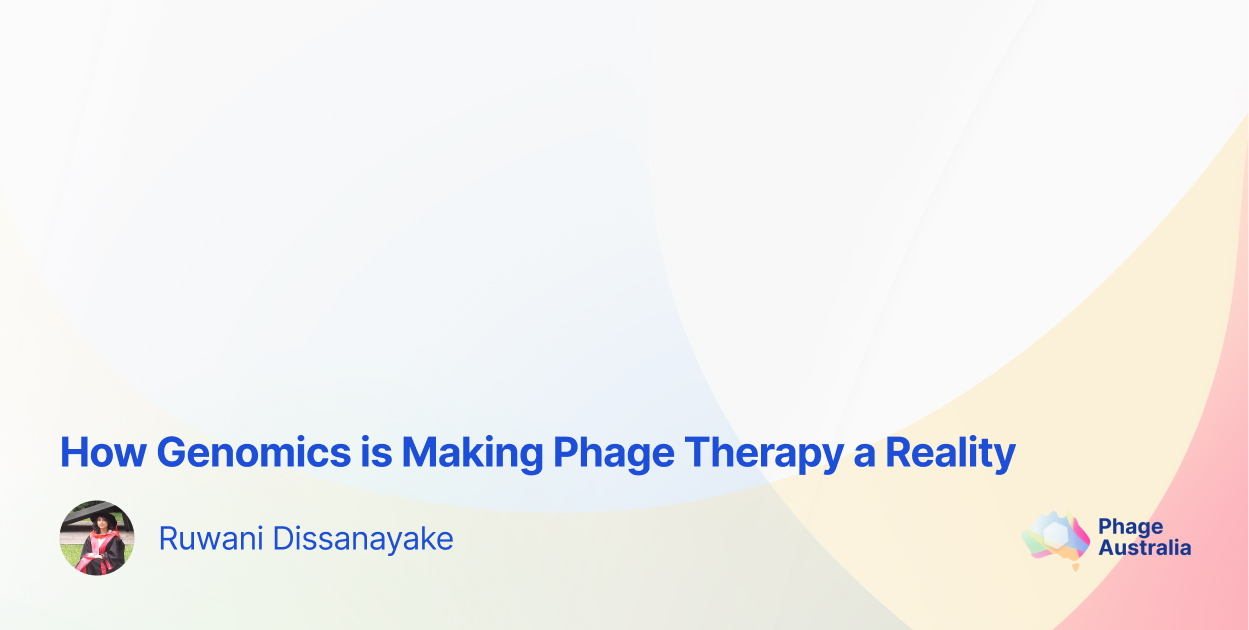How Genomics is Making Phage Therapy a Reality

Bacteria have long been a challenging adversary in the world of medicine. Antibiotics have been a primary treatment for bacterial infections, but their overuse has led to the emergence of antibiotic-resistant (AMR) bacteria, causing a significant health threat (refer health economics report commissioned by Iredell, Lin et al, Phage Australia). A promising revival of phage therapy is set to combat AMR infections more effectively and with fewer side effects than antibiotics. Bacteriophage (phage) is a virus that kills bacteria without causing harm to humans. Phages are naturally occurring and, unlike antibiotics, are very target-specific, allowing them to combat harmful bacteria and be less likely to harm the body's "good" bacteria. [1][2]
Genomics plays a significant role in the development and success of phage therapy. By understanding the genomes of phages and bacteria, researchers are able to identify phages that are highly effective against specific bacteria, ensuring the right phage is selected for the right bacterial infection, and toxins and AMR genes are excluded in the phage biomanufacturing (including manuafacturing bacterial host). Genomic sequencing also enables tracking of bacteria and phage present in the patient during phage therapy.
In the field of phage therapy, AGRF is a proud collaborative partner of Phage Australia based at the Westmead Institute for Medical Research, Westmead Health Precinct. Led by Professors Jonathan Iredell and Ruby Lin, the project has made significant advances over the past few years, and it is evolving into a clinical service at Westmead Health Precinct. AGRF’s sequencing service has contributed to the successful development and delivery of a comprehensive genomic characterisation pipeline for phage therapy, which ensures the safety, purity, and quality of high-value phage stocks for therapeutic use. Specifically, sequencing of the phage and bacteria genomes enables in-depth characterisation at several points of this therapeutic phage production pipeline. This plays an important part in data gathering to inform regulatory bodies on the safety and efficacy of phage therapy.
The future of phage therapy is bright with 30 patients (both adults and children) already treated at the Westmead Health Precinct by the clinical and research team (Joey Lai, Nouri Ben Zakour, Stephanie Lynch, Jessica Sacher, Holly Sinclair, Indy Sandaradura, Susan Maddocks, Clinton Colaco) led by Professors Jonathan Iredell, Ruby Lin and Dr Ameneh Khatami in partnership with AGRF colleagues (Ruwani Dissanayake, Cath Moore, Oliver Distler, Bhawana Nain, John Lai). AGRF and Phage Australia look forward to more positive outcomes through this safe and effective treatment.
- Petrovic Fabijan, A., Lin, R.C.Y., Ho, J. et al. Safety of bacteriophage therapy in severe Staphylococcus aureus infection. Nat Microbiol 5, 465–472 (2020). https://doi.org/10.1038/s41564-019-0634-z
- Khatami A, Lin RCY, Petrovic-Fabijan A, Alkalay-Oren S, Almuzam S, Britton PN, Brownstein MJ, Dao Q, Fackler J, Hazan R, Horne B, Nir-Paz R, Iredell JR. Bacterial lysis, autophagy and innate immune responses during adjunctive phage therapy in a child. EMBO Mol Med. 2021 Sep 7;13(9):e13936. doi: 10.15252/emmm.202113936
For further reading:
- O'Neill, J. (2016). Tackling Drug-Resistant Infections Globally: final report and recommendations, Wellcome Trust and UK Government.
- Impact of Phage Therapy in Prosthetic Joint Infection – Phage Australia 2022 https://www.researchgate.net/publication/370899054_Impact_of_Phage_Therapy_in_Prosthetic_Joint_Infections
- Impact of Phage Therapy in AMR Sepsis – Phage Australia 2022 https://www.researchgate.net/publication/370899039_Impact_of_Phage_Therapy_in_AMR_Sepsis
- STAMP protocol: https://bmjopen.bmj.com/content/12/12/e065401